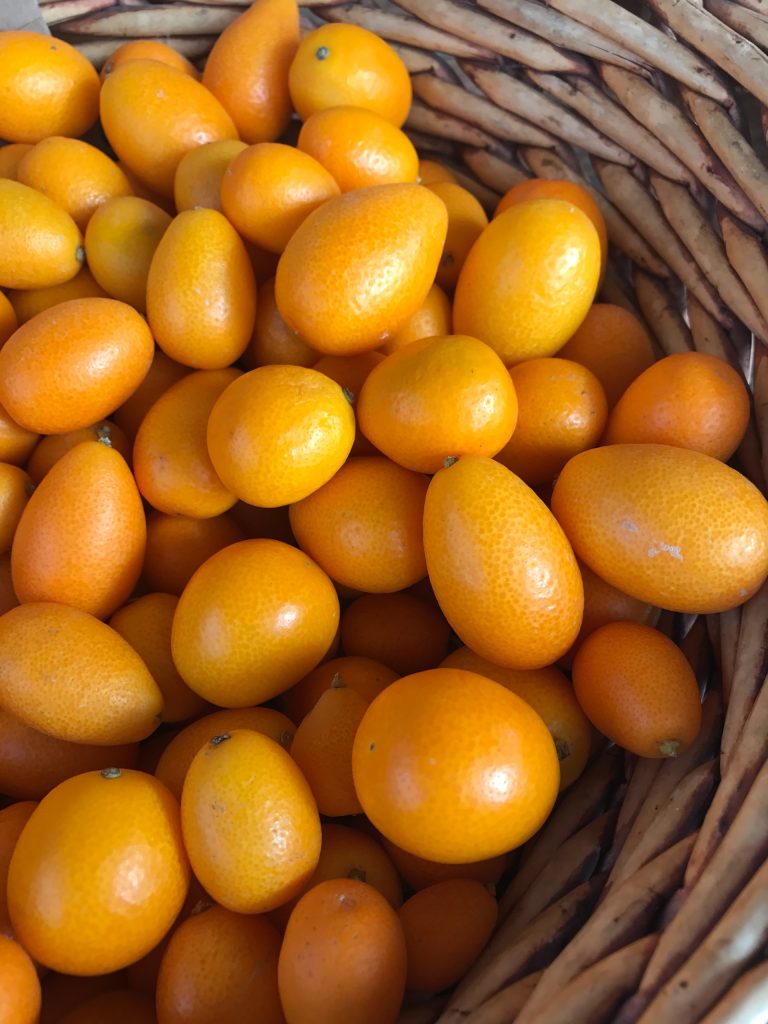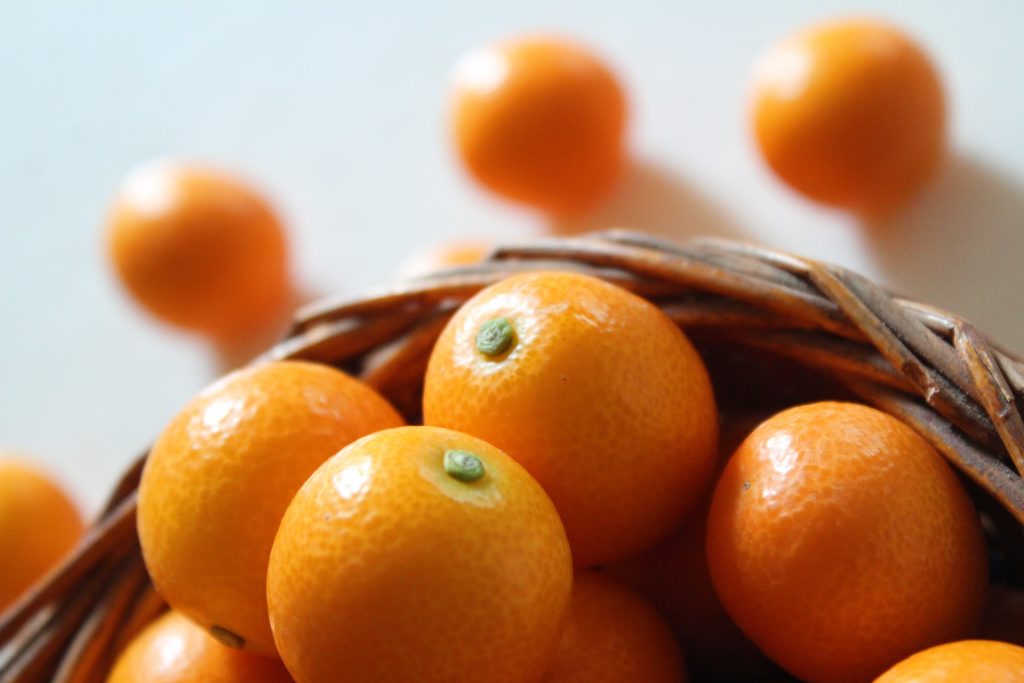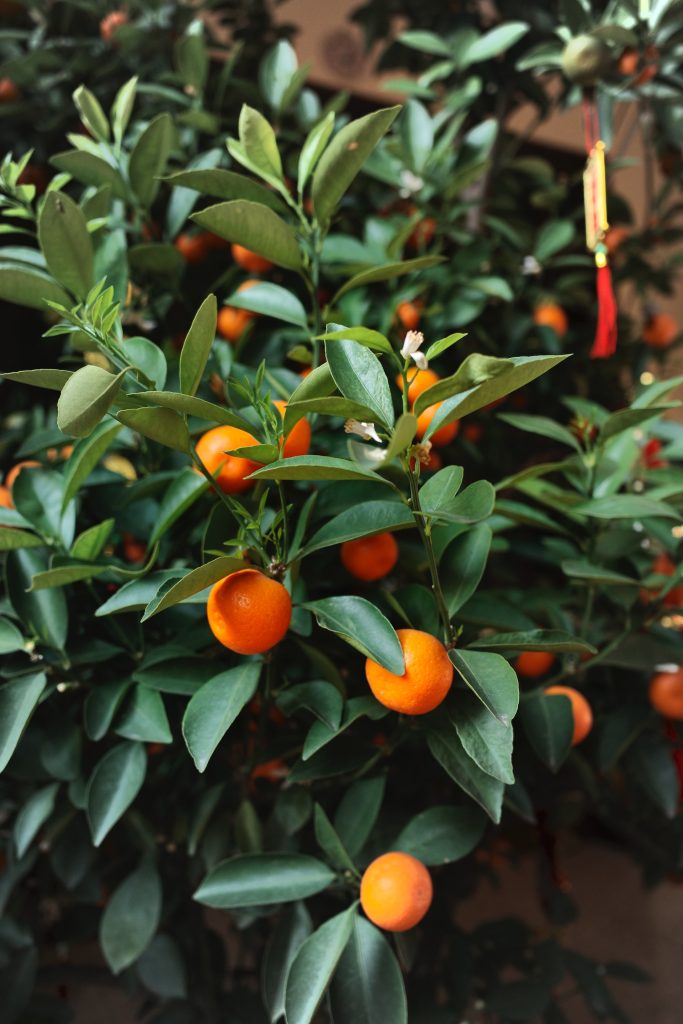If you’re looking to expand your tea repertoire, you might want to try kumquat tea. Kumquats are small, orange-like fruits that are native to China. They have a sweet and tangy flavor that makes them perfect for tea.
Kumquat tea is an excellent vitamin C, fiber, and antioxidant source. Drinking it regularly can help boost your immune system, improve digestion, and protect your body from harmful free radicals.
If you want to learn more about this peculiar tea, keep reading since we discuss preparation methods, variations, and much more.
Please note: This article contains affiliate links, meaning I may earn a commission if you make a purchase by clicking a link. Of course, this comes at no extra cost to you and helps me keep offering readers solid information.

What is Kumquat Tea?
Kumquats are small, oval-shaped fruits about the size of a grape. They are native to Southeast Asia, specifically China, and have been cultivated for centuries. Their peel is edible, which sets them apart from other citrus fruits.
The name “kumquat” is derived from the Cantonese word “gam-gwat,” which means “golden orange.” The fruit has a bright orange color when ripe. The skin is thin and smooth, with a slightly bumpy texture. Inside, the fruit contains several small seeds and segmented pulp.
The skin tastes sweet, while the pulp is sour and tangy. When eaten whole, the combination of flavors creates a unique balance of sweet and sour. Some people prefer to eat them raw, while others use them in various culinary applications, such as marmalades, preserves, desserts, or as a dish garnish.
Kumquat tea is made by steeping kumquat slices or peels in hot water for several minutes. Some people like to add honey or other sweeteners to their tea to enhance the flavor. This tea can be enjoyed hot or cold, and it’s a great alternative to sugary drinks like soda and juice.
Kumquat Tea Ingredients & Preparation
You will need a few simple ingredients to make a cup of this tea. Here’s what you’ll need:
- Fresh kumquats: You’ll need about 6-8 kumquats per cup of tea. Look for kumquats that are bright orange and feel heavy for their size. Avoid any that are too soft or have blemishes. If you cannot access fresh kumquat, you can use the dried version.
- Water: Use filtered water for the best flavor. You’ll need about 2 cups of water per cup of tea.
- Tea: You can use black or green tea, depending on your preference. Use one tea bag per cup of tea.
- Sugar: Use granulated sugar to sweeten your tea to taste.
- Honey: If you prefer a natural sweetener, use honey instead of sugar.
- Lemon, orange, or key limes: These citrus fruits can be added to your tea for extra flavor.
To make the tea, start by washing the kumquats and slicing them thinly. Bring the water to a boil in a pot and add the sliced kumquats. Reduce the heat and simmer for 10-15 minutes. Remove from heat and add the tea bag. Let steep for 3-5 minutes, depending on the strength of tea you prefer.
Remove the tea bag and strain the kumquat mixture through a fine mesh strainer. Add sugar or honey to taste and stir until dissolved. Add a squeeze of lemon, orange, or key lime juice for extra flavor if desired.
You can prepare the tea only with kumquat (do not add green or black tea). You may want to do this to avoid adding caffeine to the drink.
Another option is to make concentrated kumquat tea by soaking the sliced kumquats in freshly boiled water for a few hours. Once the tea is concentrated, refrigerate it and use it as needed.

Variations of Kumquat Tea
Here are a few kumquat tea variations to try:
Kumquat Iced Tea
For a refreshing summer drink, try making kumquat iced tea. Brew your favorite black tea (prepare a strong brew with double the amount you would use for hot tea) and add sliced kumquats, lemon juice, and honey to taste. Chill the mixture and serve over ice for a delicious and healthy drink.
Kumquat Herbal Tea Blends
Kumquats can also be incorporated into herbal tea blends. For instance, kumquat can be combined with chamomile, thyme, or mint to create refreshing drinks with a wide range of positive properties.
Fruit Tea
Kumquat tea can also be used as a base for fruit tea. Add sliced strawberries, blueberries, and raspberries to kumquat tea. You can also try adding mint leaves for an extra burst of flavor.
Kumquat Ginger Tea
The zesty and warm notes of ginger complement the tanginess of kumquat exceptionally well. The spicy kick of ginger adds depth and complexity to the sweet and sour flavors of kumquat.
Kumquat Vanilla Tea
The smooth and sweet undertones of vanilla can complement the tartness of kumquat, creating a well-rounded flavor combination.
Culinary Uses
Kumquat tea can be used in many recipes, from marinades to desserts. Try using it as a glaze for chicken or pork, or add it to your favorite cake or muffin recipe for a unique flavor. The possibilities are endless when it comes to cooking with this tea.
For more ideas on combining kumquats with true or herbal teas, check out our citrus teas and orange peel tea articles.
Health Benefits of Kumquat Tea
Kumquat tea is not only a delicious beverage but also a healthy one. Here are some of the health benefits you can expect when consuming it:
Rich in Vitamin C
Kumquats are an excellent vitamin C source, essential for maintaining a healthy immune system. One cup of kumquat tea contains about 70% of your daily recommended intake of vitamin C. Vitamin C also helps your body absorb iron, which is essential for maintaining healthy blood.
Contains Vitamin A
Also, kumquats contain vitamin A, important for maintaining healthy eyesight. Vitamin A also supports the immune system and helps cell growth and development.
High in Antioxidants
Kumquat tea is rich in antioxidants, which help protect your body from damage caused by free radicals. Free radicals are unstable molecules that can damage cells and contribute to aging and disease. Antioxidants neutralize free radicals, helping prevent or reduce cell damage.
Low in Calories
Kumquat tea is a low-calorie beverage, making it a great choice for those watching their calorie intake. One cup contains only about 30 calories.
Helps Maintain Blood Sugar Balance
Kumquat tea may also help maintain healthy blood sugar levels. The fiber in kumquats helps slow down the absorption of sugar into the bloodstream, which can help prevent spikes in blood sugar levels.

Storing and Refrigeration
When storing this tea, you should keep a few things in mind to ensure that it stays fresh and flavorful for as long as possible.
Firstly, it is important to refrigerate your kumquat tea if you plan on storing it for more than a few hours. This will help to prevent the growth of bacteria and other microorganisms that can cause spoilage and affect the taste of your tea.
To store the tea in the fridge, pour it into a clean, airtight jar or container and place it in the fridge. If you have brewed your tea with loose leaves or fruit, you may want to strain it before storing it to remove any solids that could cause cloudiness or spoilage.
It is also important to keep your tea away from strong-smelling foods and other odors in the fridge, as it can absorb these odors and affect the flavor of your tea.
When you are ready to enjoy the tea, remove it from the fridge and give it a quick stir or shake to ensure that any settled solids are evenly distributed. You can enjoy it cold or warm it up in a pan or microwave if you prefer it hot.
Growing and Using Kumquats
If you want to enjoy the delectable flavor of kumquats in your tea, you may want to consider growing them yourself. Here are some tips for growing and using kumquats:
- Growing kumquats: Kumquats can be grown in pots or in the ground. They prefer well-draining soil and full sun. Water them regularly, but don’t overwater them. You can fertilize them with a citrus-specific fertilizer every few months. The trees can grow up to 10 feet tall, but you can keep them smaller by pruning them.
- Using kumquats: Kumquats can be eaten whole or sliced. As per the topic of this article, you can use them to make tea or in blends with other ingredients. You can also make kumquat jam or marmalade and spread it on toast or scones.
- Cooking with kumquats: Kumquats can be used in a variety of sweet and savory dishes. You can use them in salads, stir-fries, and marinades. You can also candy them and use them as a garnish for desserts.
Buying Recommendations
Even though I recommend using fresh kumquats to prepare tea, I know they may not be available in certain places. Also, I know they can reach high prices in regular markets. That is why I am including dried and blended suggestions below.



Frequently Asked Questions
What are some recipes that use kumquat syrup?
Kumquat syrup can be used in various recipes, such as cocktails, salad dressings, and desserts. Mix it with soda, water, or lemonade for a refreshing drink, or use it as a glaze for chicken or fish. Kumquat syrup can also sweeten baked goods like muffins or cakes.
What are the health benefits of kumquats?
Kumquats are a good source of vitamin C, fiber, and antioxidants. They can help boost your immune system, improve digestion, and promote healthy skin. Eating kumquats can also help regulate blood sugar levels and lower the risk of heart disease.
How can I make kumquat iced tea?
To make kumquat iced tea, brew your favorite tea (such as green or black tea) and let it cool. Add kumquat syrup to taste and stir well. Then, pour the tea over ice and garnish with fresh kumquat slices or mint leaves.
What are some non-alcoholic kumquat drink recipes?
Besides kumquat iced tea, you can also make kumquat lemonade, kumquat mocktails, or kumquat smoothies. Mix kumquat syrup with fresh lemon juice and water to make kumquat lemonade. Mix kumquat syrup with soda water or ginger ale for kumquat mocktails, and add a splash of lime juice. For kumquat smoothies, blend kumquats with yogurt, honey, and ice.
Are there any side effects to eating kumquats?
Kumquats are generally safe to eat, but some people may experience allergic reactions or digestive problems. If you have a history of citrus allergies or digestive issues, it’s best to consult your doctor before consuming kumquats.
Can kumquat leaves be used to make tea?
Yes, kumquat leaves can be used to make tea. Simply steep fresh or dried kumquat leaves in hot water for a few minutes, and then strain the leaves. Kumquat leaf tea is said to have medicinal properties and can help with coughs, colds, and sore throats.

We enjoy kumquats when in season. Thanks to friends, we have access to this fruit. So, we have enjoyed this tea many times (sometimes we make a big batch and freeze it). I hope you have enjoyed the article.
Have you tried this tea?
More About Tea
The Process of Making Black Tea